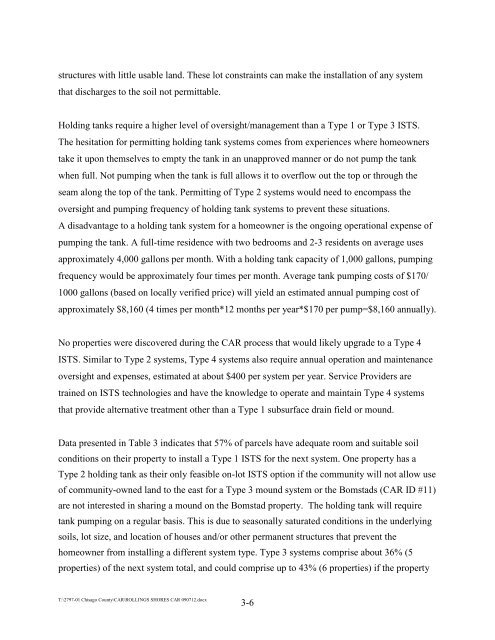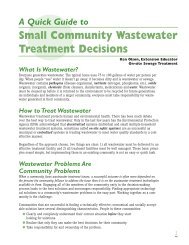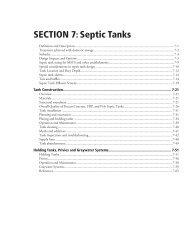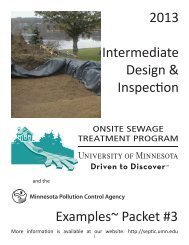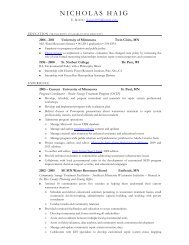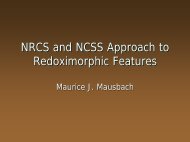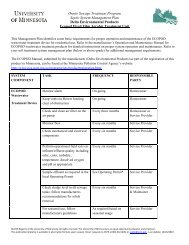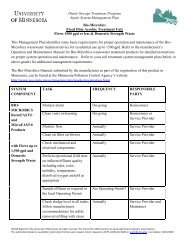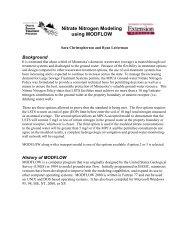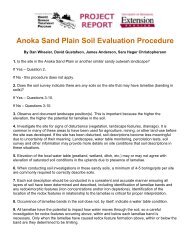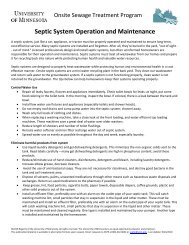Community Assessment Report - Onsite Sewage Treatment ...
Community Assessment Report - Onsite Sewage Treatment ...
Community Assessment Report - Onsite Sewage Treatment ...
You also want an ePaper? Increase the reach of your titles
YUMPU automatically turns print PDFs into web optimized ePapers that Google loves.
structures with little usable land. These lot constraints can make the installation of any systemthat discharges to the soil not permittable.Holding tanks require a higher level of oversight/management than a Type 1 or Type 3 ISTS.The hesitation for permitting holding tank systems comes from experiences where homeownerstake it upon themselves to empty the tank in an unapproved manner or do not pump the tankwhen full. Not pumping when the tank is full allows it to overflow out the top or through theseam along the top of the tank. Permitting of Type 2 systems would need to encompass theoversight and pumping frequency of holding tank systems to prevent these situations.A disadvantage to a holding tank system for a homeowner is the ongoing operational expense ofpumping the tank. A full-time residence with two bedrooms and 2-3 residents on average usesapproximately 4,000 gallons per month. With a holding tank capacity of 1,000 gallons, pumpingfrequency would be approximately four times per month. Average tank pumping costs of $170/1000 gallons (based on locally verified price) will yield an estimated annual pumping cost ofapproximately $8,160 (4 times per month*12 months per year*$170 per pump=$8,160 annually).No properties were discovered during the CAR process that would likely upgrade to a Type 4ISTS. Similar to Type 2 systems, Type 4 systems also require annual operation and maintenanceoversight and expenses, estimated at about $400 per system per year. Service Providers aretrained on ISTS technologies and have the knowledge to operate and maintain Type 4 systemsthat provide alternative treatment other than a Type 1 subsurface drain field or mound.Data presented in Table 3 indicates that 57% of parcels have adequate room and suitable soilconditions on their property to install a Type 1 ISTS for the next system. One property has aType 2 holding tank as their only feasible on-lot ISTS option if the community will not allow useof community-owned land to the east for a Type 3 mound system or the Bomstads (CAR ID #11)are not interested in sharing a mound on the Bomstad property. The holding tank will requiretank pumping on a regular basis. This is due to seasonally saturated conditions in the underlyingsoils, lot size, and location of houses and/or other permanent structures that prevent thehomeowner from installing a different system type. Type 3 systems comprise about 36% (5properties) of the next system total, and could comprise up to 43% (6 properties) if the propertyT:\2797-01 Chisago County\CAR\ROLLINGS SHORES CAR 090712.docx3-6


